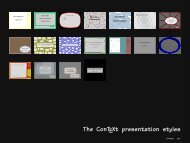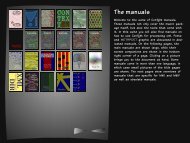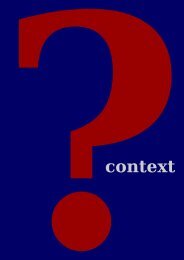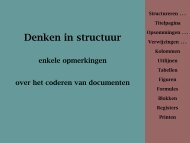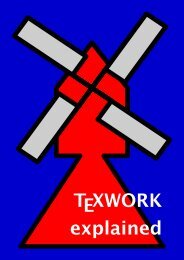ConTEXt - Pragma ADE
ConTEXt - Pragma ADE
ConTEXt - Pragma ADE
You also want an ePaper? Increase the reach of your titles
YUMPU automatically turns print PDFs into web optimized ePapers that Google loves.
Figure 2 Choose one country, two<br />
countries, three countries or no countries<br />
at all.<br />
\placefigure<br />
[here][fig:anothermap]<br />
{Choose \goto {one} [JS(Set_Field{anothermap,2})] country,<br />
\naar {two} [JS(Set_Field{anothermap,3})] countries,<br />
\naar {three} [JS(Set_Field{anothermap,4})] countries or<br />
\naar {no} [JS(Set_Field{anothermap,1})] countries at all.}<br />
{\fieldstack<br />
[anothermap]<br />
[map -- -- --, map nl -- --, map nl de --, map nl de en]<br />
[frame=on]}<br />
As one can see, we can can skip the definition and pass it directly, but I wouldn’t call that beautiful.<br />
The formal definitions are:<br />
\definefieldstack[.1.][..,.2.,..][..,..=..,..]<br />
.1. name<br />
.2. name<br />
..=.. see \setupfields<br />
\fieldstack[.1.][..,.2.,..][..,..=..,..]<br />
.1. name<br />
.2. name<br />
..=.. see \setupfields<br />
Comments<br />
The Acrobat viewers support so called text annotations. These are small notes that can be popped<br />
up. In ConT E Xt we will name them comment, because often that’s what they represent. Comment<br />
uses a restricted encoding, but fortunately we can map most common accented characters onto it.<br />
A comment looks like:<br />
15 up--to--date 1998/1 stripped screen version





